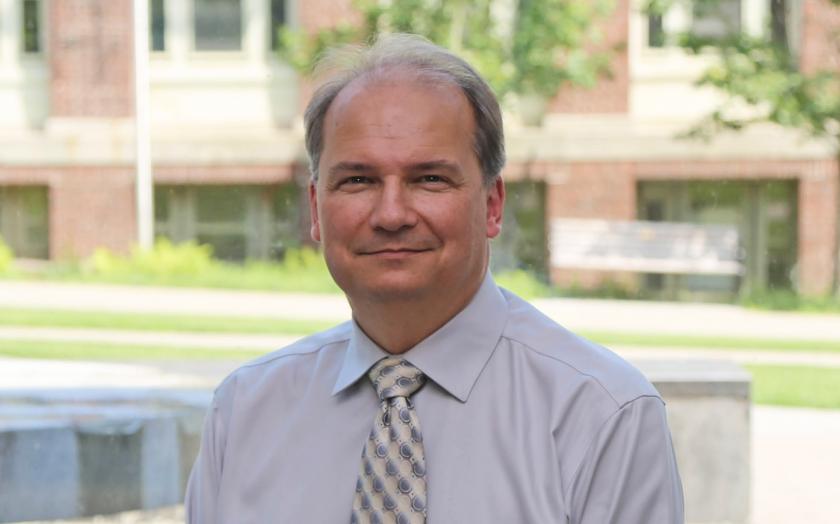January Faculty Spotlight - Gregory Jay

Dr. Gregory Jay is an attending physician at Rhode Island Hospital. He also serves as Director of Research in the Department of Emergency Medicine at Brown University. He received his MD and PhD from the Medical Scientist Training Program at the State University of New York at Stony Brook in 1990. He completed training in emergency medicine at the University of Massachusetts from 1990 through 1993 and became a fellow of the American College of Emergency Physicians in 1996. Dr. Jay also served in the Air National Guard during 1986 through 1998 serving as a flight surgeon in the 106th Aerospace Rescue & Recovery Group and the 143rd Tactical Airlift Group. Dr. Jay is also an Adjunct Professor in Biomedical Sciences at the University of Rhode Island. He is co-founder of the Lifespan Medical Simulation Center, and he has published over 50 peer-reviewed publications, and has 13 U.S. and international patents. Much of his research has been funded by National Institutes of Health (NIH) and National Science Foundation (NSF) grants. In October 2004, Dr. Jay was selected as recipient of the Bruce M. Selya Award for Research Excellence.
Photo Credit: Amy Simmons / Brown University
1) When did you know you wanted to be a biomedical engineer/researcher?
During my biomaterials course as an undergraduate in 1983 when I first heard from a visiting pathologist, who would later become my PhD mentor, about molecular ball bearings and synovial fluid, I found it rather interesting. That was at least when I started to gravitate towards my life’s work. I was already thinking about biomedical engineering as early as high school. I had some electrical engineering training by virtue of amateur radio, so I was probably gravitating more towards bioinstrumentation, and I even remember one of my projects for high school was to make a pacemaker for an earthworm using a monolithic timer. The earthworm has a series of heart chambers lined up in parallel so I was interested in pacing them with the timer. I suppose I’ve always had an interest in combining medicine and engineering. I always knew I would get an MD because I wanted to be close to the patient to truly understand the issues I wanted to address but didn’t necessarily think I would end up getting a PhD.
2) Of all of the publications you have written, is there one that you are most proud of? Why?
Probably the one that associated the reduction of friction by the appearance and lubrication of synovial fluid, which was subscribed to a protein that I had purified, to its gene. Our lab had associated the protein lubricin with the gene PRG4 and no one had done that before. That was done in the year 2000. It was published in a fairly obscure journal, but it ended up being an important paper for me because I was never properly trained in genetic disease, but we made a correct association of protein and gene in the early times of GenBank and that became the basis for an important patent.
3) Did you ever do experiments that didn’t work?
Of course, that’s the definition of progress. There’s lots of experiments that don’t work and you learn a lot from those. If you don’t have experiments that don’t work people may question your credibility. It’s important to appreciate experiments that don’t work and realize that a number of them need to be published, which is why a lot of journals now have specific issues for negative results.
An example in my work is that when we look at joint trauma models it’s a bit of a controversy as to what constitutes a good trauma. The signal you’re looking for may be obscure in poly-trauma that you see in the real world. We recently determined that destabilizing the medial meniscus in the pig is a very good model when looking at lubricin metabolism, however we discovered that simply severing the ACL is not a good trauma model in the pig even though it is in the rat. Through trial and error we’re always discovering what is and isn’t a good trauma model.
4) How do you choose the projects your group works on?
The lab is very focused on Lubricin (PRG4) right now. I’ve had the fortune to make this gene-protein association and to identify novel uses for the protein. We are fortunate with the recent breakthroughs in manufacturing PRG4 so not only are we investigating using it for prevention of osteoarthritis in large animal models, but we also had a randomized controlled trial in dry eye disease in humans and preclinical studies have been published in other disease entities. We don’t so much identify projects, we identify new clinical opportunities where manufactured lubricin can address an unmet medical need. As far as choosing projects for specific students, whenever we create a new mouse model I typically align a student against that model to understand that mouse. We want to understand its phenotypic characteristics and the cellular and tissue outcomes of its modification, for example reduced lubricin and high friction.
5) What three qualities are most important for ensuring success as a young researcher?
Energized by scientific question/problem.
Understands the translational value of their work and can actually meet with patients that may benefit.
Not afraid of failure.